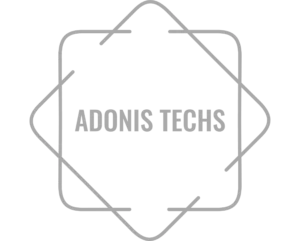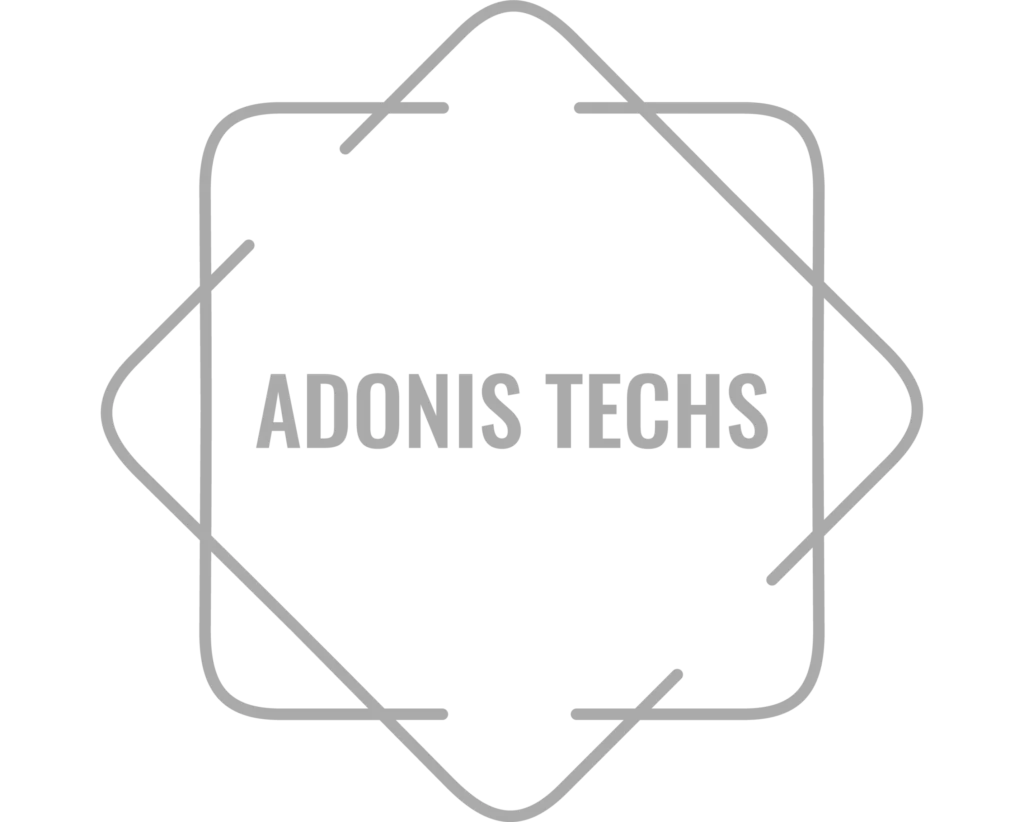In a world where speed, transparency, and reliability define success in delivery, your digital platform is your frontline. A logistics or delivery website isn’t just an online presence it’s the operational hub, the tracking center, and often the first impression for clients, drivers, and partners.
In this guide, we’ll explore:
- Why logistics and delivery websites are essential
- Core modules and features
- Technical architecture & stack
- Workflow and user experiences
- Cost factors & development phases
- Best practices and pitfalls
- How the five specialized systems relate as you scale
Why Logistics & Delivery Websites Are Critical
Operational Complexity
Logistics involves many moving parts: vehicles, drivers, warehouses, orders, routing, payments, and more. A website (plus its backend) centralizes those operations and allows automation, consistency, and measurement.
Customer Expectations
Consumers and business clients alike increasingly expect real-time tracking, delivery windows, automated status updates, and frictionless ordering. The website is often their portal to that experience.
Competitive Differentiation
A robust, reliable delivery website with intuitive interfaces and advanced features can set you apart faster adoption, fewer support calls, better trust.
Scalability & Integration
As your business grows (more orders, more regions, more services), your system must scale. You don’t want to rebuild for every new expansion. A well-designed architecture ensures you can plug in new modules (fleet, warehouse, on-demand, etc.) later with minimal friction.
That’s why many businesses build modular systems each specialized component coming together under one roof. The five articles you linked are essentially deep dives into those components:
- Water Delivery System: subscription-based delivery operations with scheduling & tracking
- Courier Tracking Portal: real-time parcel tracking and dispatch logistics
- Fleet Management Website: vehicle monitoring, driver performance, route optimization
- Warehouse Inventory System: stock management, storage, supply chain integration
- On-Demand Delivery: general delivery of anything, including instant orders
A mature logistics platform often is a hybrid of all of these.
Core Modules & Features
Below are the modules and feature sets you should consider. Not all will apply at once, but this is your blueprint.
| Module | Key Features / Responsibilities |
|---|---|
| User / Customer Interface | Registration / login; order/product catalog; scheduling; address book; payment gateway; real-time tracking; notifications; feedback & customer support |
| Vendor / Supplier Interface | Inventory management; order acceptance/rejection; preparation status; analytics & dashboards |
| Delivery Agent / Driver Module | Task list; route navigation; status updates; proof-of-delivery (photo, signature); availability status |
| Admin / Dispatcher Panel | Order orchestration; courier assignment; zone / region control; route optimization; manage users (vendors, drivers, customers); analytics & reporting |
| Fleet / Vehicle Module | GPS tracking; maintenance records; fuel & expense logs; driver assignment; performance monitoring |
| Warehouse / Inventory Module | Stock levels; SKU / batch tracking; pick/pack/dispatch workflows; barcode/RFID or scanning; reordering logic; multi-warehouse support |
| Notifications & Alerts | SMS, email, push, in-app status updates (e.g. “Order picked”, “Out for delivery”) |
| Payment & Billing | Gateway integrations, wallet systems, COD handling, refunds, invoices |
| API / Integrations | Map APIs for routing & geolocation; third-party services (SMS, email, identity, payment); external partner systems (ERP, CRM, accounting) |
| Security & Access Control | Role-based access (admin, vendor, driver, customer); data encryption; audit logs; secure API endpoints |
Each module must connect with the others fluidly. For instance:
- The courier tracking portal module (real-time status, mapping, driver updates) is crucial in any delivery business; see a deep guide here: Courier Tracking Portal – Custom Development Guide.
- The fleet management module (vehicle analytics, driver behavior, route optimization) supports operational efficiency; see the article Fleet Management Website – Key Modules Explained.
- Inventory and warehouse modules become essential when you hold stock rather than simply dispatching from vendors. A detailed breakdown is in Warehouse Inventory System Development for Logistics.
- For consumer- or business-facing platforms that fulfill immediate or scheduled orders, the on-demand delivery guide is a handy reference: On-Demand Delivery Website Development – Full Process Overview.
- In a niche scenario like bottle or water delivery (often subscription-based), the Water Delivery System Web Development article shows how to build scheduling, recurring orders, and tracking in a delivery context.
Technology Stack & Architecture Choices
Here’s a recommended stack, with commentary on trade-offs:
| Layer | Suggested Technologies / Tools | Why / Trade-Offs |
|---|---|---|
| Frontend (Web & Mobile) | React.js, Vue.js, or Angular; PWA (Progressive Web App) | Modern, scalable, responsive |
| Mobile / Driver App | React Native, Flutter, or native (iOS & Android) | Use cross-platform for cost efficiency unless you need deep native features |
| Backend / API | Node.js (Express/Nest), Laravel, Django, Ruby on Rails | Choose what your team prefers scalability, performance, ecosystem matter |
| Database | MySQL, PostgreSQL for relational data; possibly Redis or MongoDB for caching or non-relational data | Use relational for structured operations, caching/NoSQL for speed when needed |
| Maps & Routing | Google Maps API, Mapbox, OpenStreetMap + routing engine | Essential for tracking, geofencing, route optimization |
| Real-Time | WebSockets, Socket.io, or push notification services | Real-time updates for tracking and status changes |
| Infrastructure / Hosting | AWS, Google Cloud, Azure | Auto-scaling, redundancy, global reach |
| Storage / Media | S3 (or similar object storage) | For images, proof-of-delivery media, documents |
| Messaging / Notifications | Twilio (SMS), Firebase (push), SMTP / SendGrid (email) | Use providers for scale and reliability |
| Analytics / BI | Google Analytics, custom dashboards, business intelligence tools | Track KPIs, operational metrics |
| Security & Access | OAuth / JWT tokens, role-based access control, input validation | Protect data, ensure modular access |
Architecture is layered: UI → API → Business Logic → Data → Integrations.
Microservice or modular approach is preferable once scale grows, so you can spin off courier logic, warehouse logic, or billing modules independently.
Workflow & User Journey
Let’s walk through how these modules interact in a delivery operation. Use this as a reference when designing flows or writing specs.
1. Customer places an order
- Browses, adds items, schedules a delivery.
- Payment processed via chosen method (wallet, card, COD).
- Order enters the system with status “New / Pending”.
2. Vendor / Inventory processing
- If you hold inventory, the warehouse module picks and packs.
- If vendor-led, vendor confirms and prepares items.
3. Dispatch or Routing
- Admin or algorithm assigns the nearest delivery agent.
- Driver receives a task, route is optimized.
4. Pickup & Transit
- Driver marks “picked up”; GPS tracking starts.
- Customer sees live location and ETAs.
5. Delivery & Proof
- Driver reaches delivery address, marks “delivered”, and uploads proof (photo, signature).
- System updates status and sends notification.
6. Billing / Invoicing
- Final charges confirmed; invoice delivered to customer and/or vendor.
- Commission or split payments handled if needed.
7. Feedback & Analytics
- Customer can rate service.
- Admin panel aggregates data: delays, failed deliveries, driver performance, vehicle usage, etc.
Each step must map onto modules described earlier. If you’re handling just tracking, dispatch, and customer-facing features initially, you can defer features like warehouse or billing until later but plan for them.
Cost Drivers & Estimation
Development cost depends heavily on:
- Number of roles/modules you support (customer, vendor, driver, admin, warehouse)
- Depth of real-time features (map updates, tracking, status changes)
- Routing & optimization complexity
- Payment, commission logic, wallets
- Integrations (SMS, email, mapping, accounting, third-party systems)
- Scalability, performance, and security demands
- Post-launch support, maintenance, and infrastructure
Rough ballpark ranges (for reference):
- MVP / Basic Platform (customer + driver + admin, simple tracking): $8,000 – $15,000
- Mid-Tier System (vendor, routing, analytics, notifications): $15,000 – $30,000
- Enterprise-Level Platform (multi-region, warehouses, complex billing, third-party integrations): $30,000+
But costs vary by region, technology choice, team expertise, and scope. Always build in buffer for unexpected changes and infrastructure scaling.
Best Practices & Pitfalls
1. Start with an MVP
Don’t try to build every feature at once. Launch core modules, get user feedback, then iterate.
2. Design for mobile first
Many users customers, drivers will access via phones.
3. Real-time reliability is tough
Implement retry logic, offline support, and fallback states (e.g. coarse status when GPS fails).
4. Clean data models & modular architecture
If your database and codebase aren’t modular, you’ll struggle as you scale.
5. Security & data privacy
Always use HTTPS, validate inputs, audit access, encrypt sensitive fields.
6. Robust logging & error monitoring
Tracking failures, API errors, and system logs is invaluable in operations.
7. Testing & QA
Unit tests, integration tests, load tests. A failure during live operations can cost brand trust.
8. Gradual roll-out & staging environment
Don’t release major updates directly into production. Use staging, beta testers, feature flags.
How the Specialized Systems Tie Into a Full Logistics Platform
Let me show how each of the five articles you shared represents a specialized piece of the bigger system:
- Water Delivery System Web Development – Cost & Workflow describes how subscription, scheduling, and customer-specific logic can be integrated into a delivery website. This model is ideal for services that deliver products on a repeated schedule (e.g. water jugs).
- Courier Tracking Portal – Custom Development Guide drills into parcel and courier management precisely the tracking, route updates, and assignment modules you’ll need.
- Fleet Management Website – Key Modules Explained provides depth into vehicle monitoring, driver metrics, and operations optimization, which feeds your dispatch logic and KPI dashboards.
- Warehouse Inventory System Development for Logistics explores the stock control and warehouse side of logistics that becomes crucial if your platform holds inventory.
- On-Demand Delivery Website Development – Full Process Overview lays out the full delivery lifecycle, covering order → dispatch → delivery, tying together many modules.
When you’re building a platform, think of it in layers. Start with user and tracking modules, then progressively integrate fleet, inventory, subscription, and routing logic. You don’t need to build the warehouse or the billing system immediately just keep the architecture open.
Closing Thoughts
“Logistics and Delivery Website Development” is a huge domain. But it doesn’t have to overwhelm you. With modular thinking, a well-defined MVP, scalable architecture, and iterative development, you can gradually assemble a powerhouse system.
- Begin with your core value: what distinguishes your service (on-demand, scheduling, tracking).
- Build the modules you need first.
- Keep future modules in mind (fleet, warehouse, analytics).
- Prioritize reliability, security, and user experience.
- Use the linked articles above as reference guides as your system grows in complexity.


